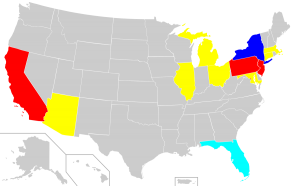The months of September and October are an important time for people of the Jewish faith. During this time, they celebrate the New Year during Rosh Hashanah, have a solemn Day of Atonement on Yom Kippur, and celebrate Sukkot to commemorate the provisions given by Yahweh.
Another important aspect of Judaism is language; as many of us already know, young men learn Hebrew in order to read from the Torah, and many Jewish names reflect a rich cultural and linguistic heritage. But what many may not know is that the language that is spoken daily in Russia, the US, and other nations with Jewish immigrants amongst friends is not Hebrew, but Yiddish, a separate language entirely that is again reflective of the history of its people.

Yiddish has its origins in Jewish immigrants to Germany during the 9th century. Although the origins are not 100% clear, what is known is that many Jewish traders came with the Romans, and eventually took High German and mixed it with Slavic and Hebrew influences to create a new language entirely. The name Yiddish is actually a reflection of this mixing of cultures, being a form of the High German word meaning Jewish. There were several other languages that came about in a similar fashion, such as Ladino, a mix of Spanish and Yiddish, in Spain, but none have the far-reaching use of Yiddish in modern day.
Like Czech using the Cyrillic alphabet despite being more in common with a Romance language, Yiddish uses a Hebrew script in spite of its German influences. In its earlier forms Yiddish orthography was essentially Hebrew script of German, but as time passed on, it became more and more distinct; the biggest distinction being in Yiddish there is orthography for all vowels, whereas in Hebrew they are sometimes omitted entirely.
The phonology of the language has also evolved heavily since its 9th century origins. As more and more people of Jewish descent moved around the world, in particular to America, the language began to shed most of its Slavic origin; in today’s standardized Yiddish, almost none remains. Phonologically, there are 6 unique vowel sounds and 3 diphthongs, almost all tracing back to a Germanic origin.

The cultural importance of the language continues into modern times. Many Yiddish loanwords, such as schmaltz and chutzpah, have been adapted into common English vernacular, and recently a production of Fiddler on the Roof was presented in New York City entirely in Yiddish (with English supertitles). The Jewish people take pride in their heritage, and this is well reflected not only in their customs, but also their language, both how it has evolved, and how it has influenced languages where they have lived.
For more information about Yiddish in the modern age, the Museum actually has a short video on the role of Yiddish as a heritage language in a rapidly changing world from Miriam Isaacs at the Meyerhoff Center for Jewish Studies at the University of Maryland. Please follow this link to watch this informative video.
Further Reading and Sources:
